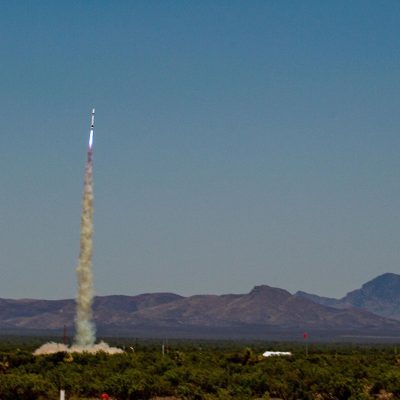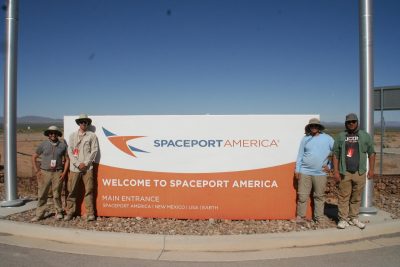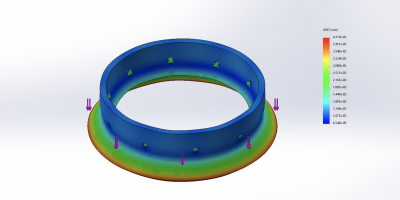
The UCONN AIAA student chapter rocketry team first competed at IREC 2018, with four members making the trip to New Mexico. Every year since, the team has grown, and with it the scale of the project. This year, we have 21 students who have chosen to challenge themselves to engineer and build a sounding rocket.
The rocketry team has three goals to promote student growth:
1) To allow students to apply the technical skills learned in the classroom to a real-world problem.
2) To allow students to practice professional skills not necessarily taught: project management, public speaking, technical communication, and teamwork.
3) To provide students with an opportunity to network with industry professionals, being both our industry sponsors and the judges in attendance at the competition.
What is IREC?

IREC is the Intercollegiate Rocket Engineering Competition where student teams from across the world come together to compete in the Spaceport America Cup. With judges from a number of technical disciplines and industry professionals in attendance, it provides a unique opportunity for students interested in aerospace to meet potential employers. The competition requires teams to engineer a sounding rocket to achieve a target apogee. Judges score teams based on both their flight statistics, as well as their engineering analysis presented through a technical report, a poster presentation, and a podium session. IREC provides our students with an opportunity to challenge themselves as engineers, and to practice the skills learned in the classroom on a practical problem.
More information about the competition can be found on their website: http://www.soundingrocket.org/what-is-irec.html
Our Plan

This year we plan to compete at IREC again in the 30K SRAD category. To do this, we have designed a 13’2″ tall, 7.7″ diameter rocket. To lift this 165 lb rocket, we will be developing our own O class rocket motor, based on what we learned developing our motor last year. We will be producing our own composite reinforced fins and will be assembling the airframe here at UCONN. Avionics will feature both a commercially available flight computer, as well as a student build unit. Students will need to validate the strength of the recovery hardpoints to ensure the vehicle is safe to fly. In the nose, a scientific payload designed by the team will be installed to collect data during the flight. Due to the unprecedented events of the spring of 2020, the IREC rocketry competition for 2020 has been canceled. We have been approved for competition in 2021, and are intending to continue the build process starting again in the Fall of 2020, targeting a launch date of mid June, 2021.
Updates
9/26/2019:
Project first revealed. More updates to follow as parts come in, subgroups are assigned, and things begin to come together. Check back to see how things progress!
10/12/2019:
First Saturday Workshop! Discussed aerodynamic resonance phenomena in rear fins (Fin Flutter) and dual parachute deployment of the rocket. Teams split up and worked on rendering CAD models for the Rocket.

10/26/2019:
Subteams this week worked on designing components for the rocket. From the avionics to SolidWorks simulations, the team is busy getting ready for the competition season!
Flange used to transfer thrust from motor to airframe. The subteam hopes to machine this part from scratch using UConn’s machine shop

10/29/2019:
Congratulations to the UConn AIAA student team on making the 2020 Spaceport America Cup! Announcements made on https://www.herox.com/SpaceportAmericaCup2020/update/2942.
Official ESRA page: http://www.soundingrocket.org/2020-sa-cup.html

12/15/2019
As the semester comes to a close, the entire rocketry team would like to thank everyone in the UCONN community for being so supportive this semester. We look forward to hitting the ground running in the new year.

Have a Happy Holidays!
2/7/2020
With the help of the Upstate Rocketry Research Group (URRG) and our local Tripoli Rocketry Association adviser, we were able to practice our process in mixing solid motors and characterized our propellant over break. This culminated in the static firing of an M-class motor (approx. 25 lbs of propellant) in late January. The test was a success, with the motor performing nominally. Changes to some motor geometry improved the performance greatly and gave a much better thrust profile. The plot shows the simulation and actual thrust curves from the motor. We saw a 2.5% variance in ISP from the simulation and static fire, with the propellant burning a bit slower than expected. A full-scale static fire is planned for February to build on these results.
